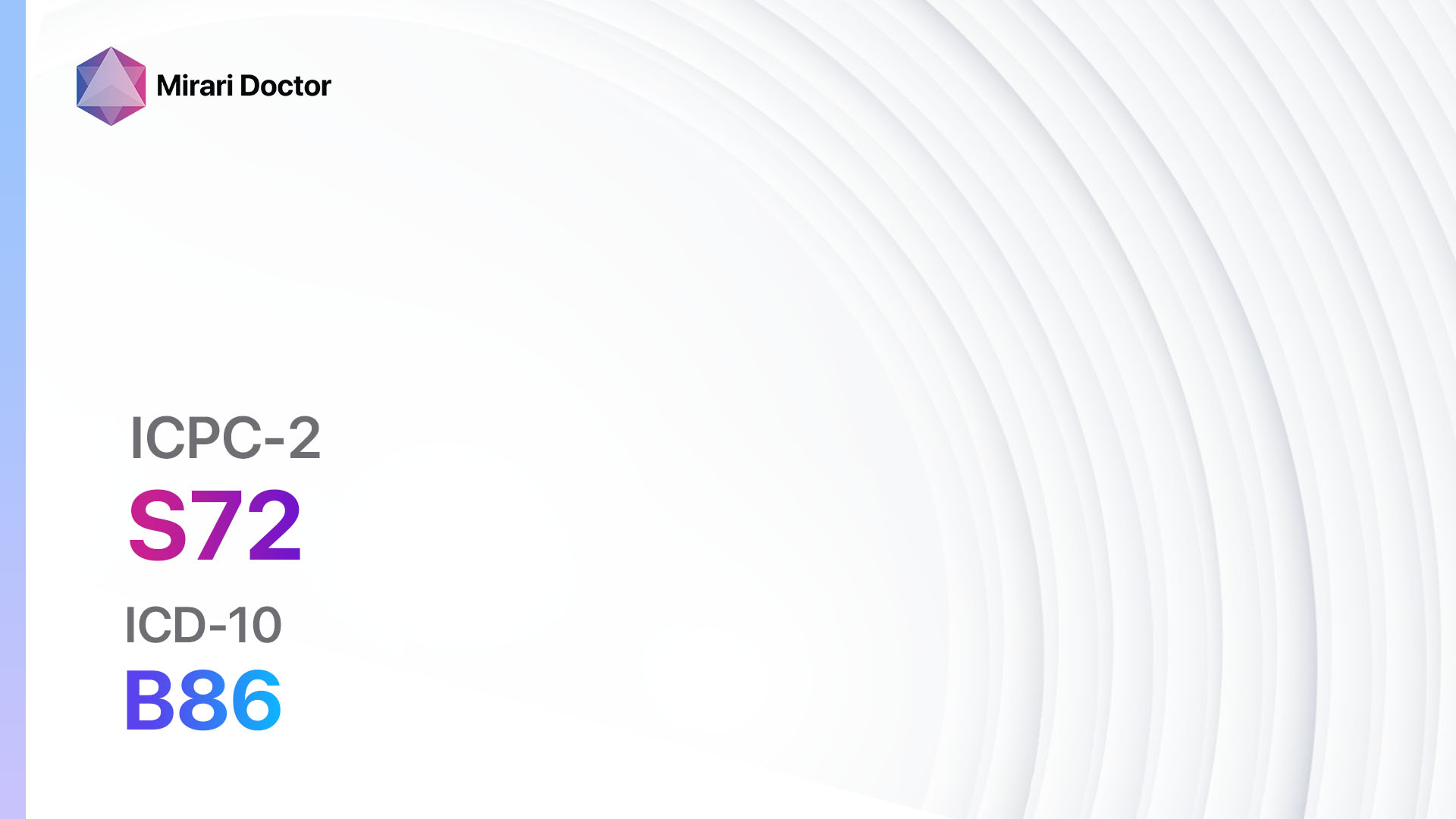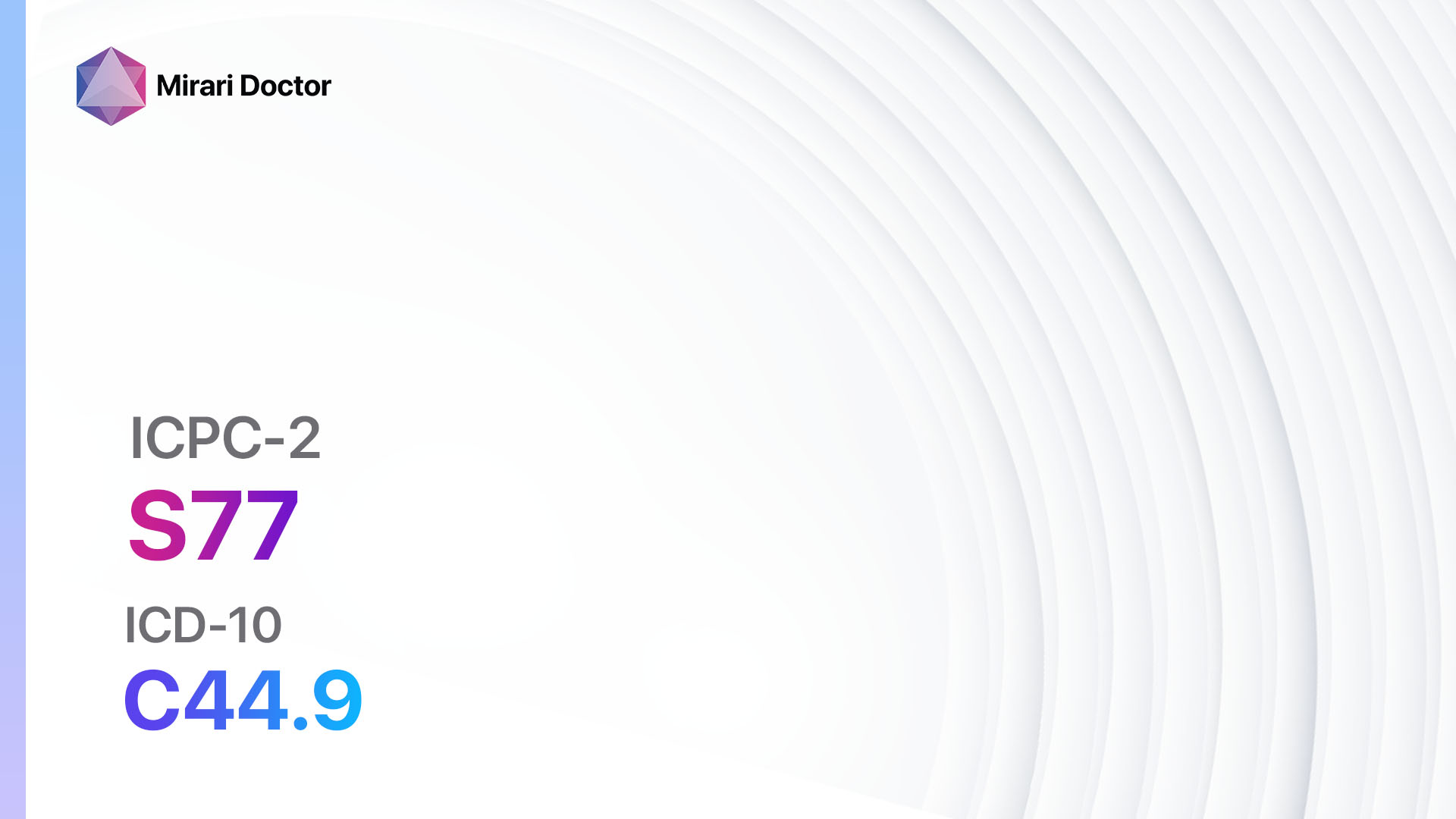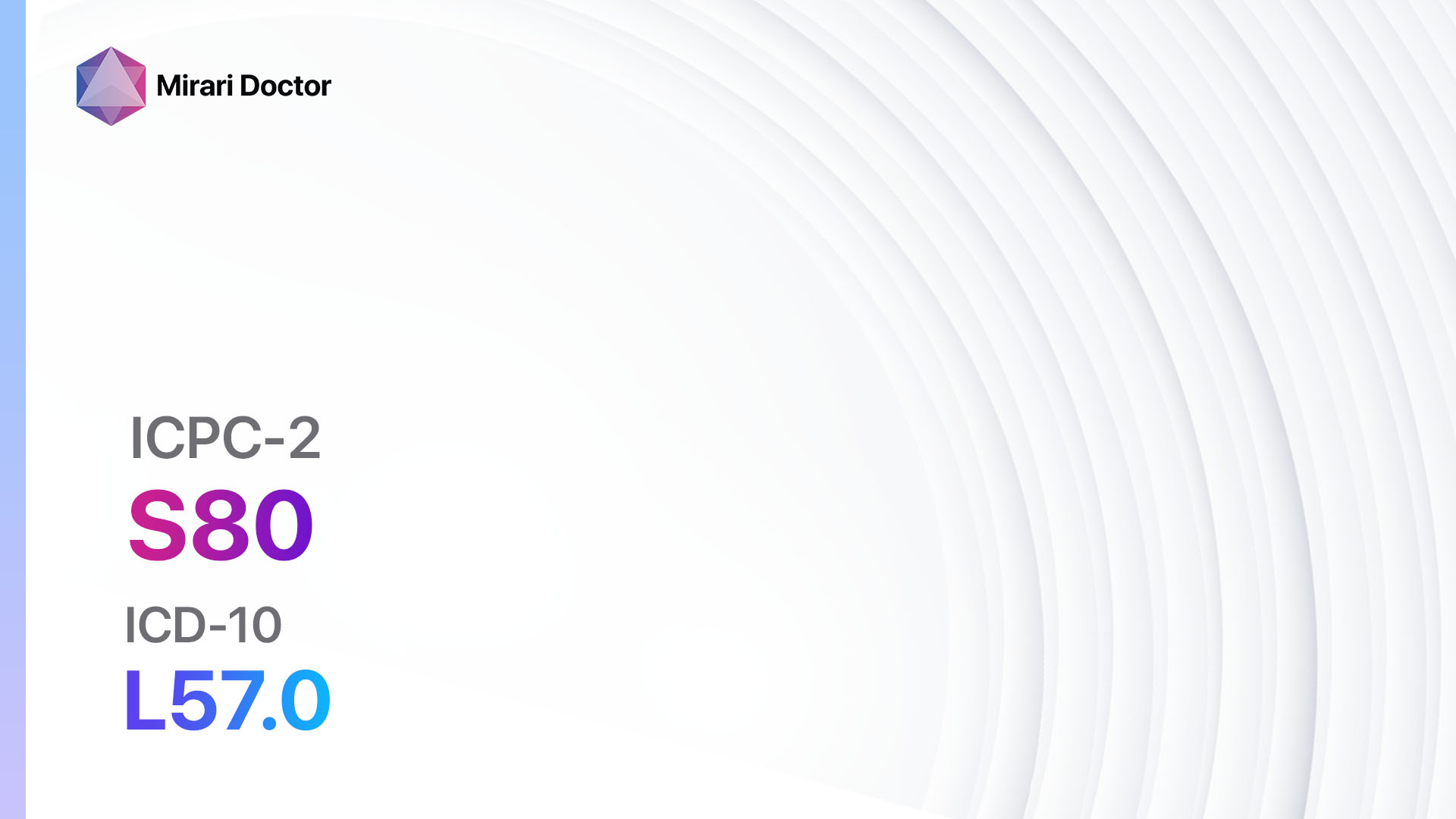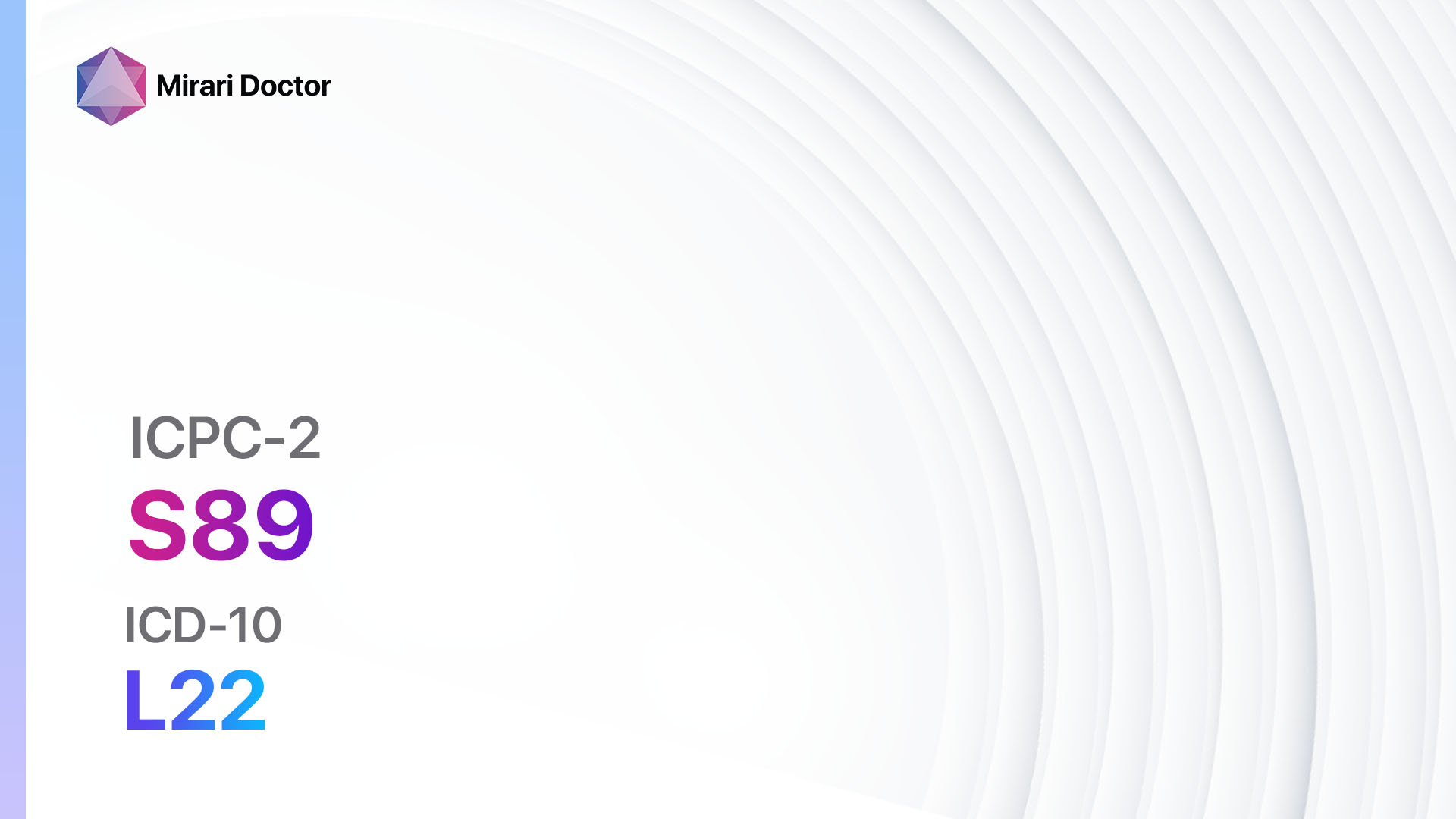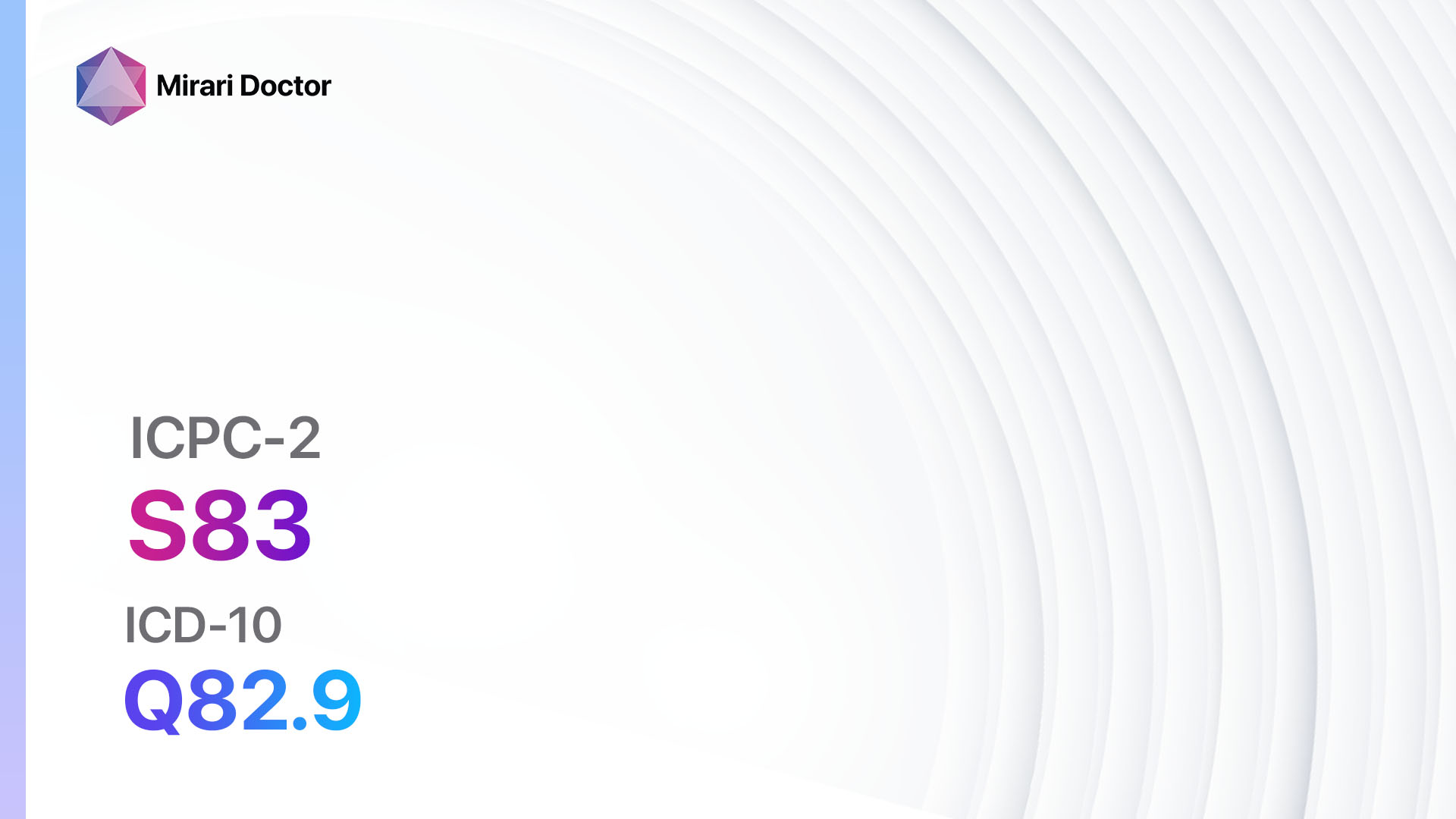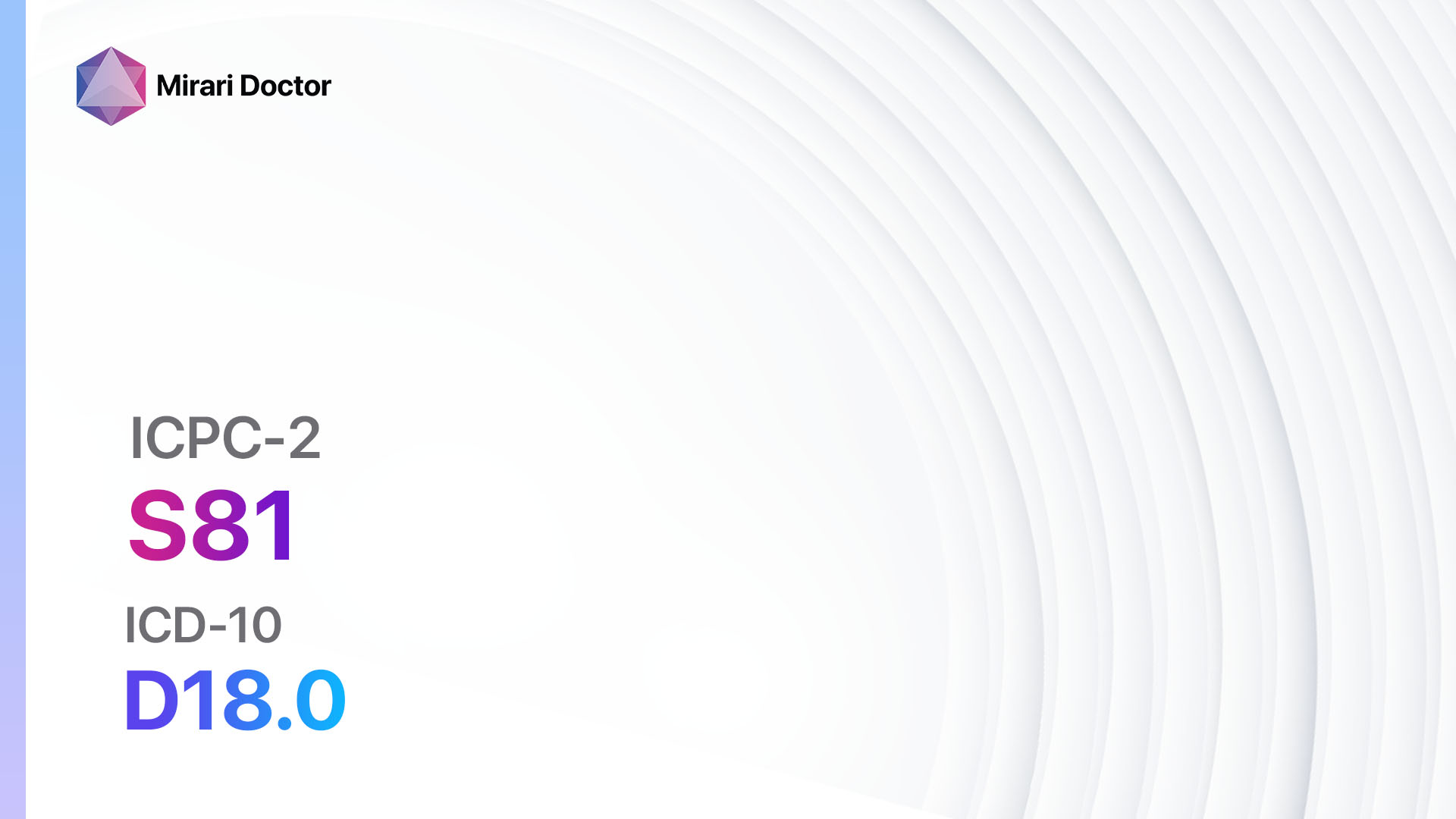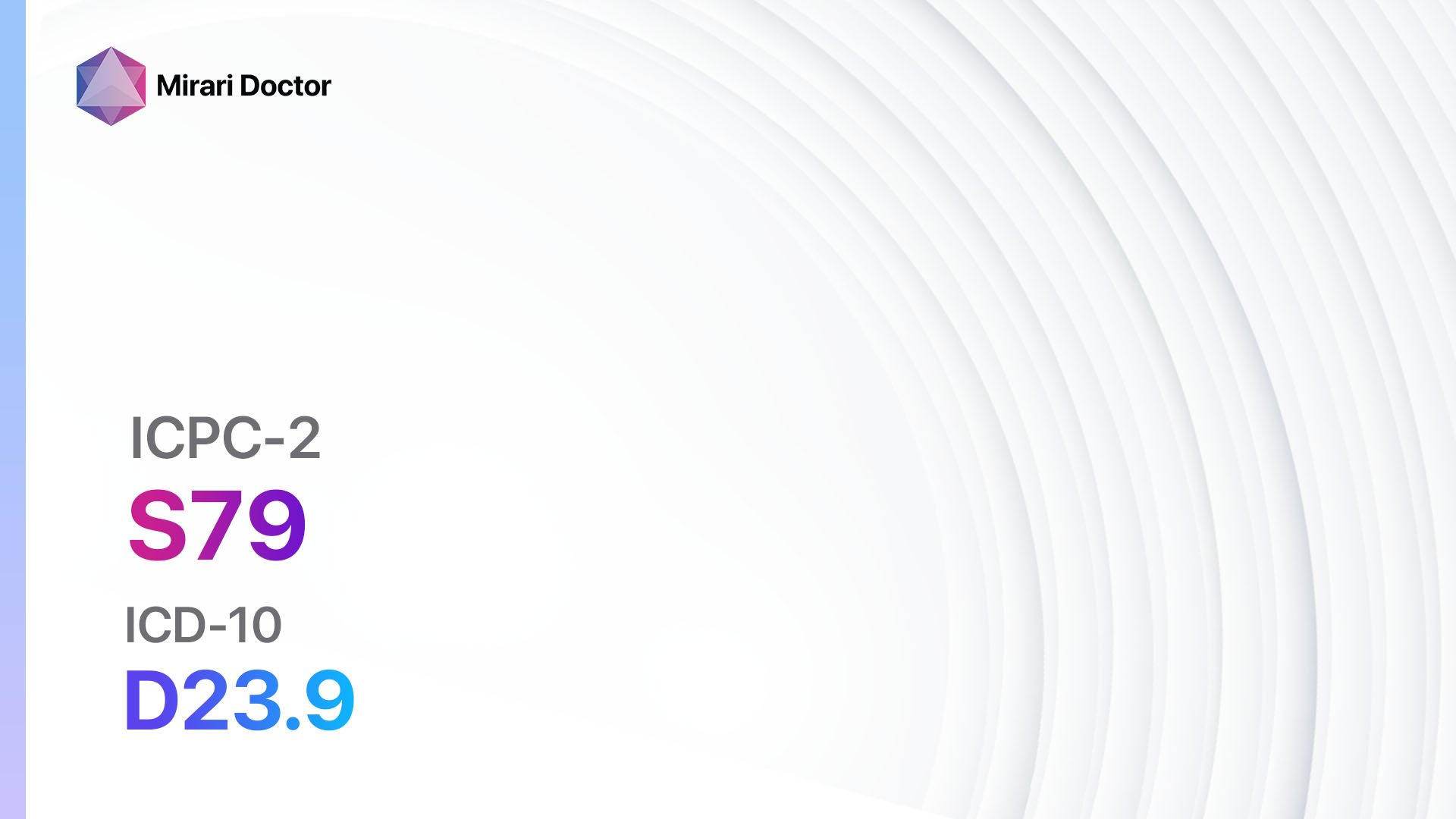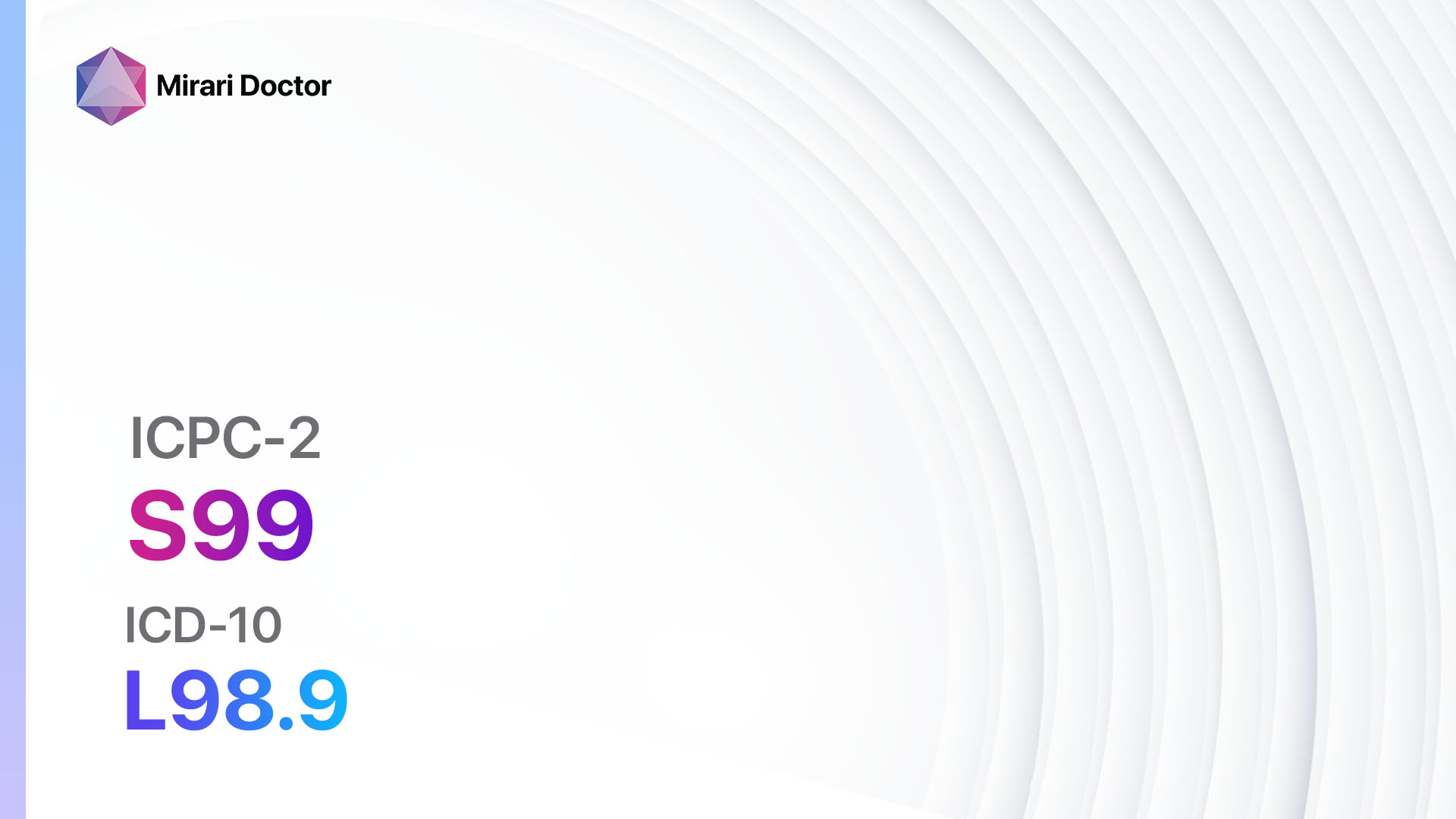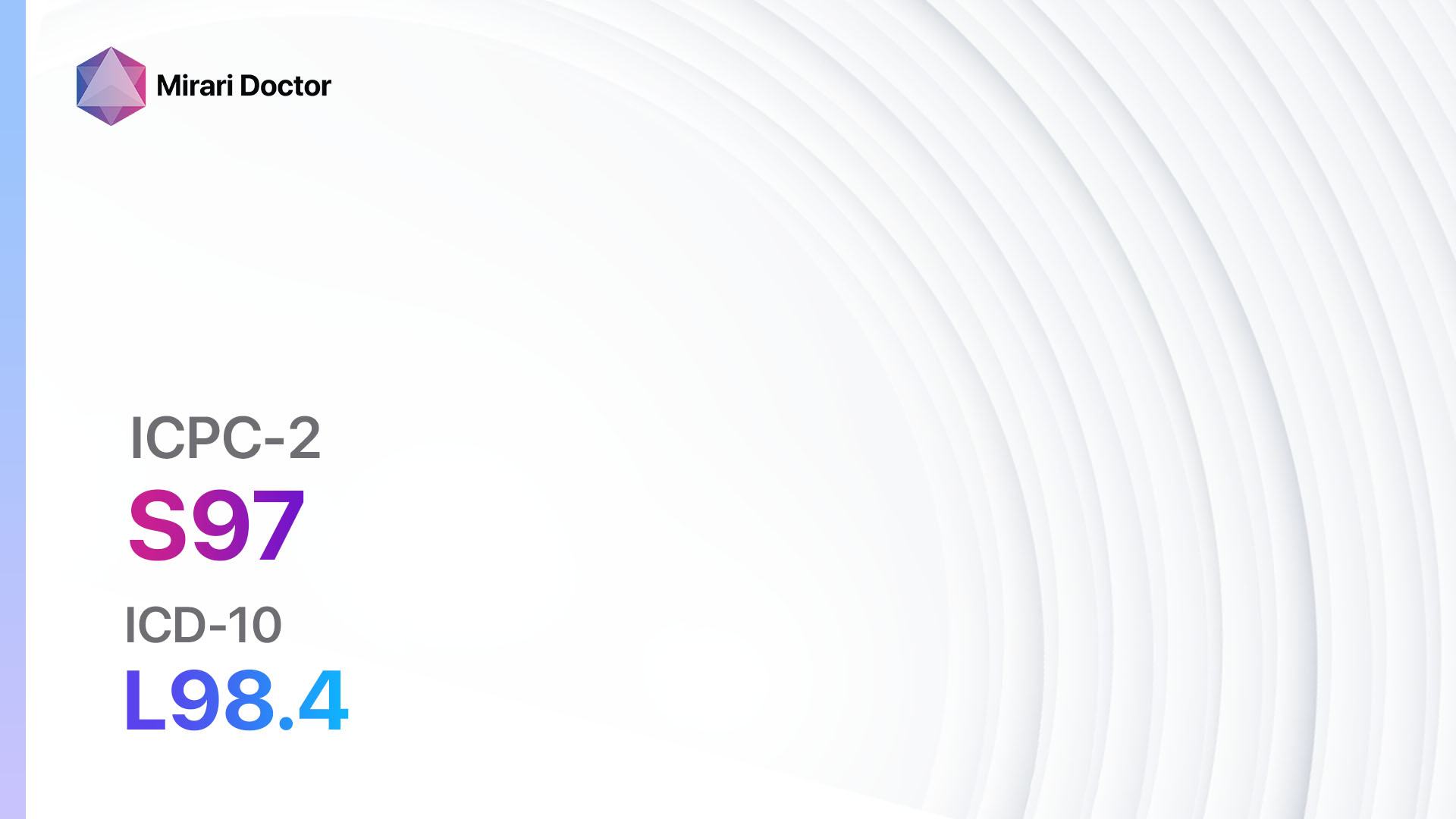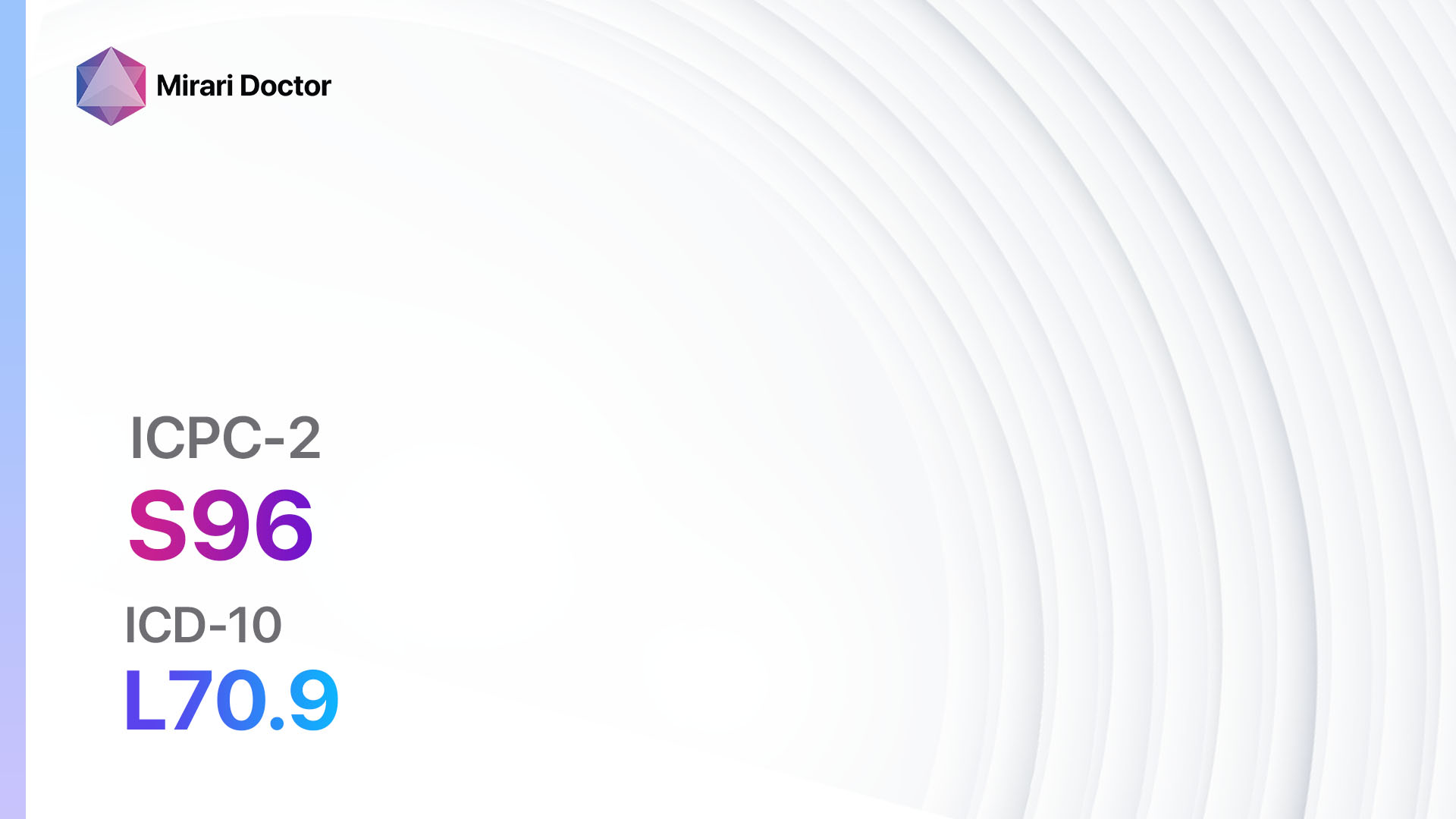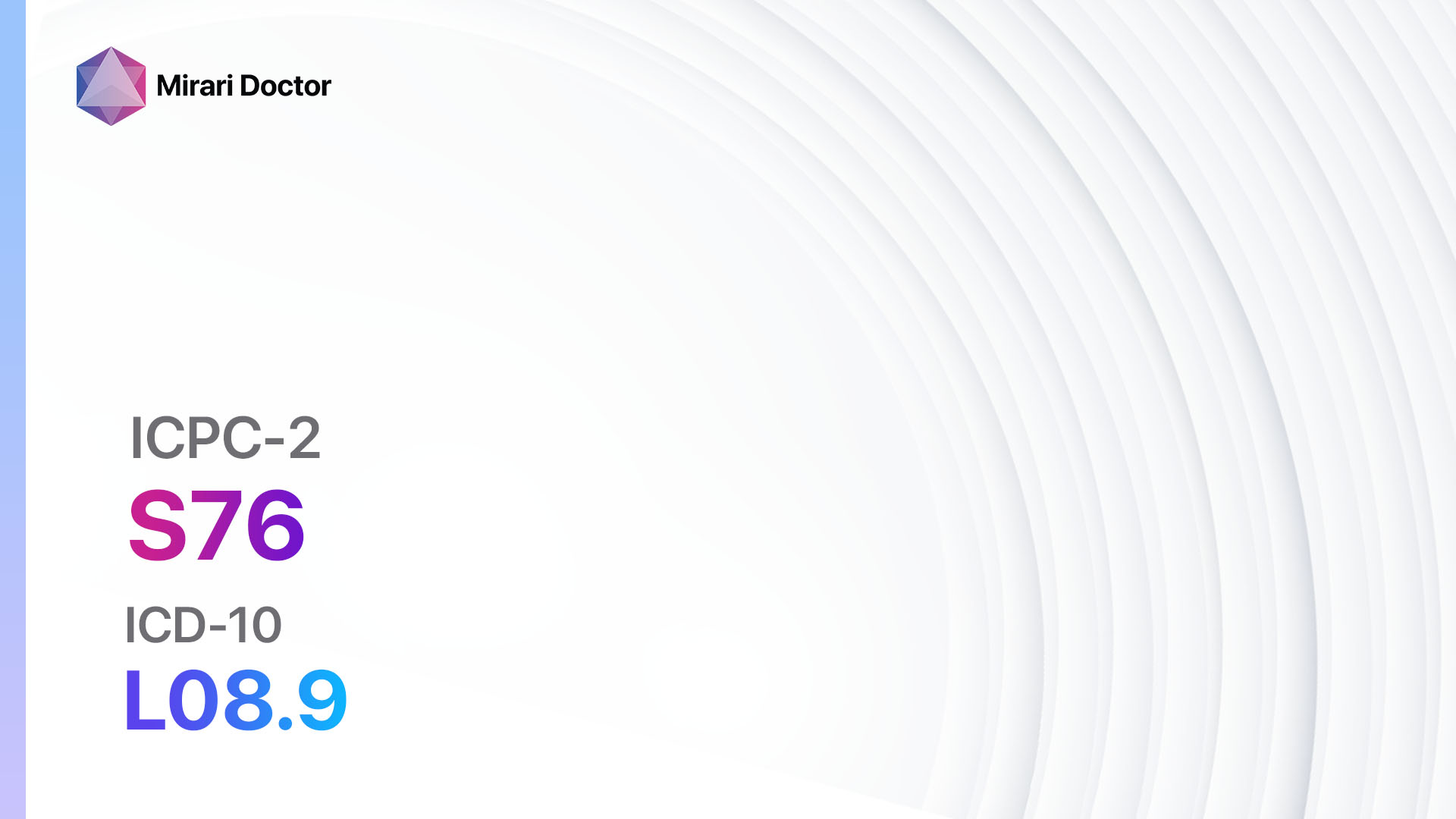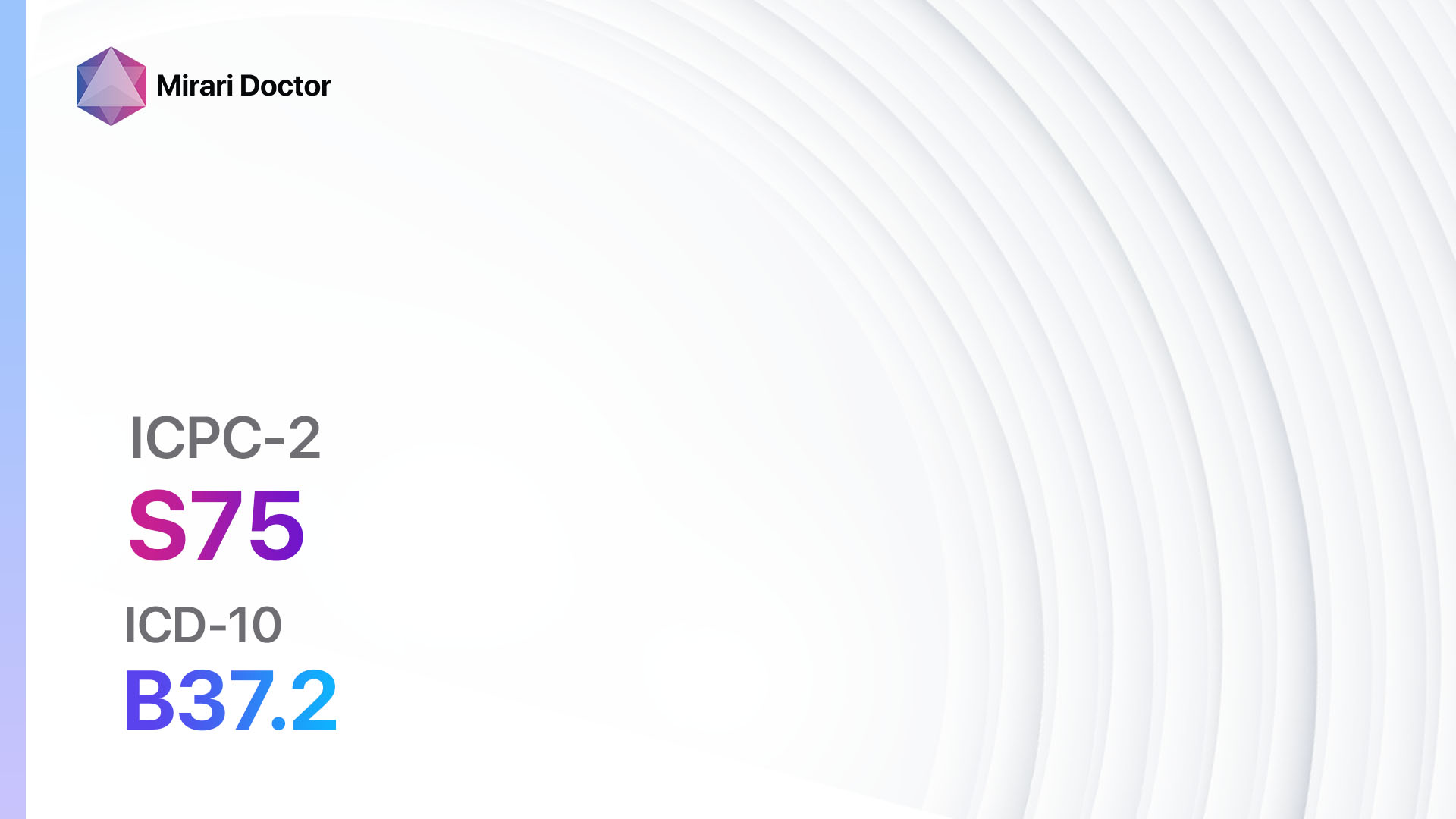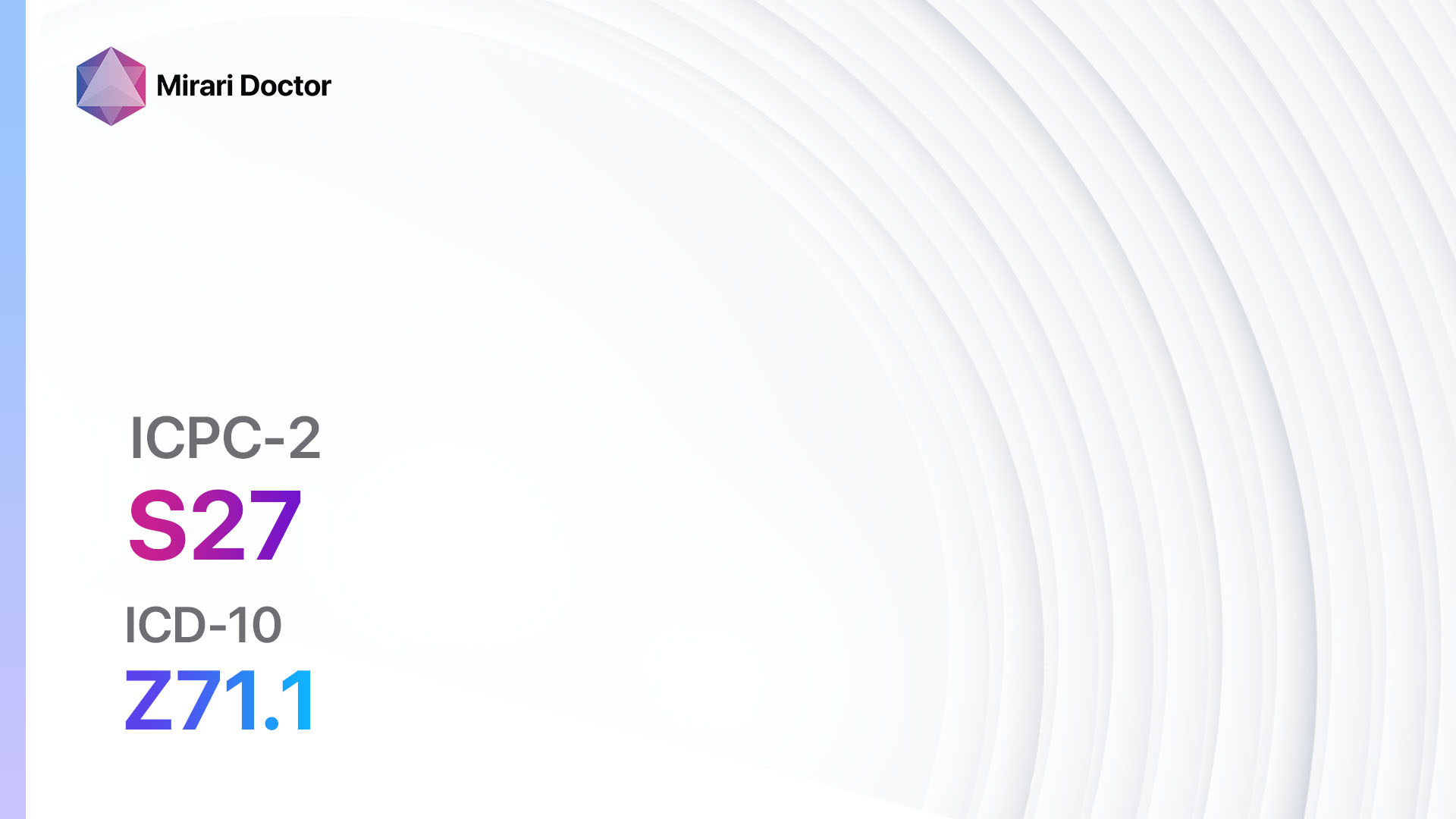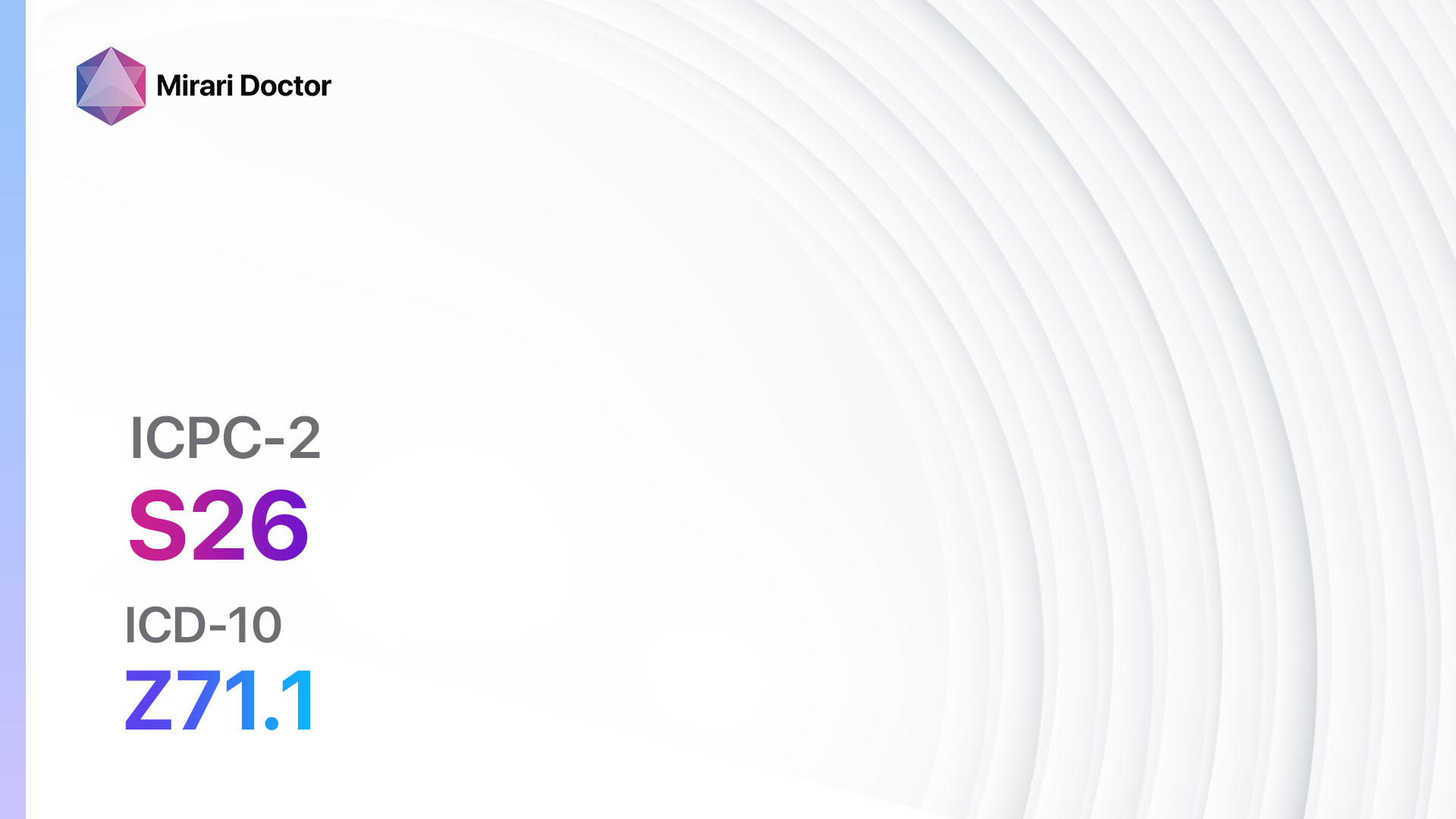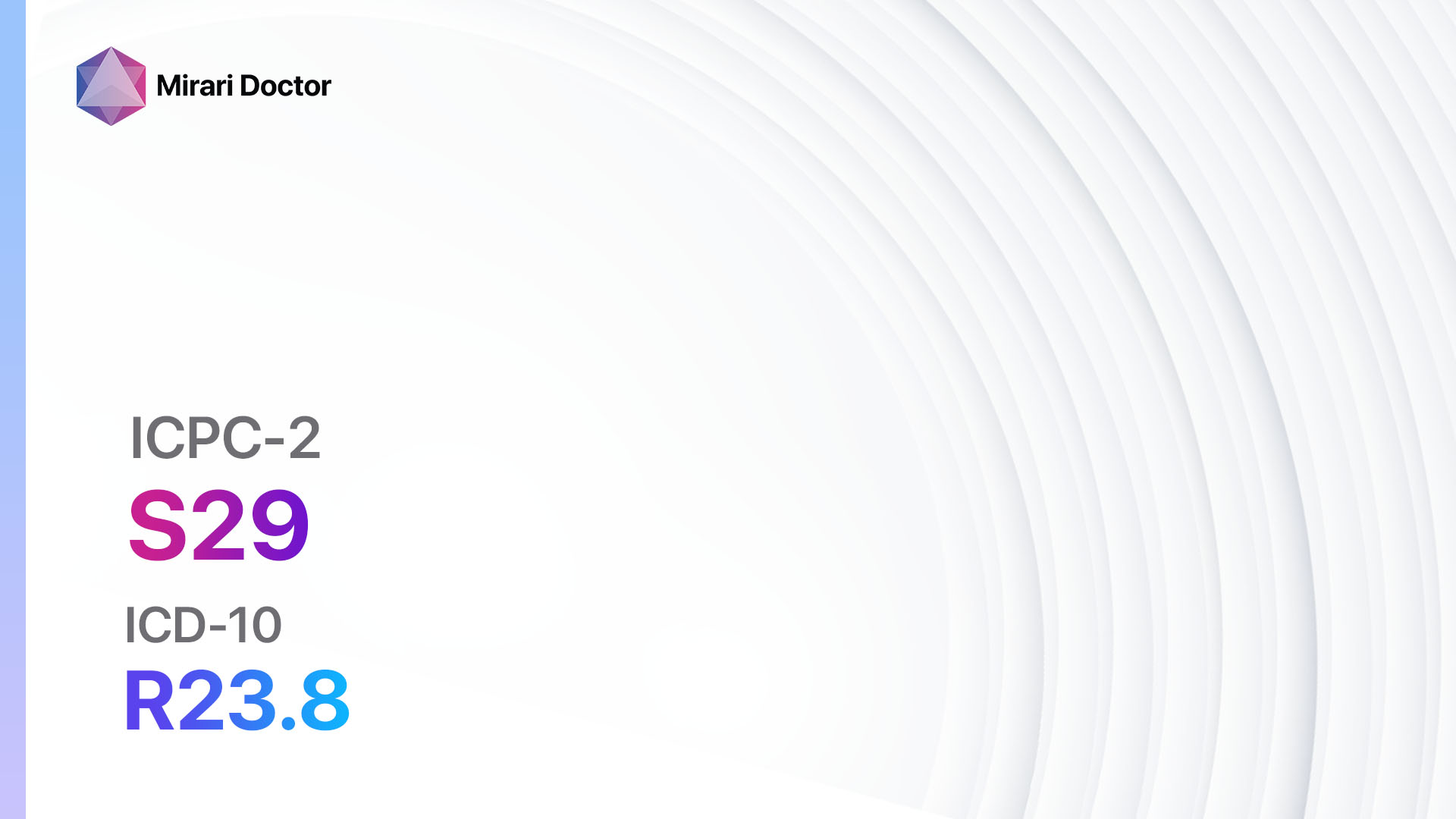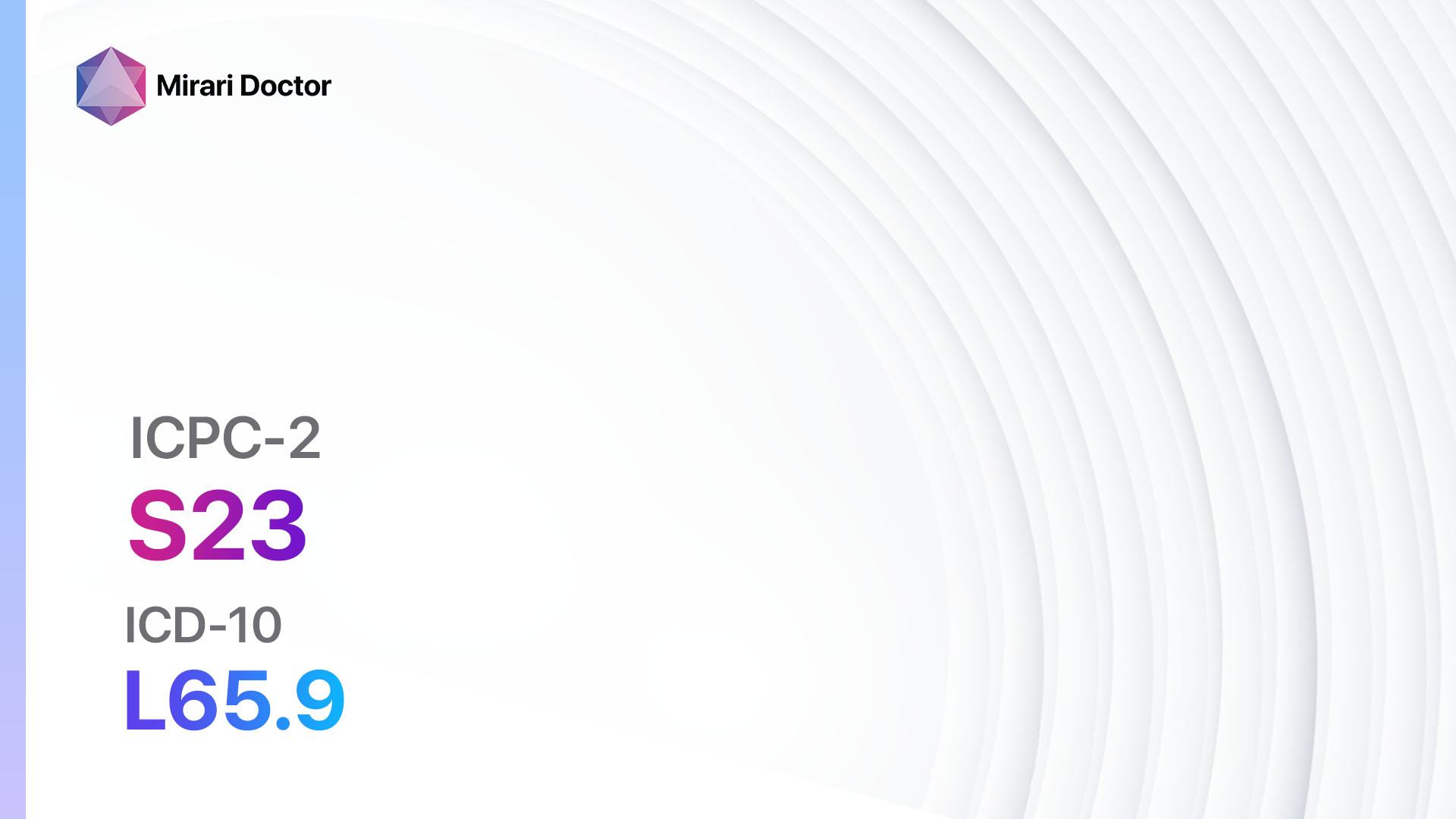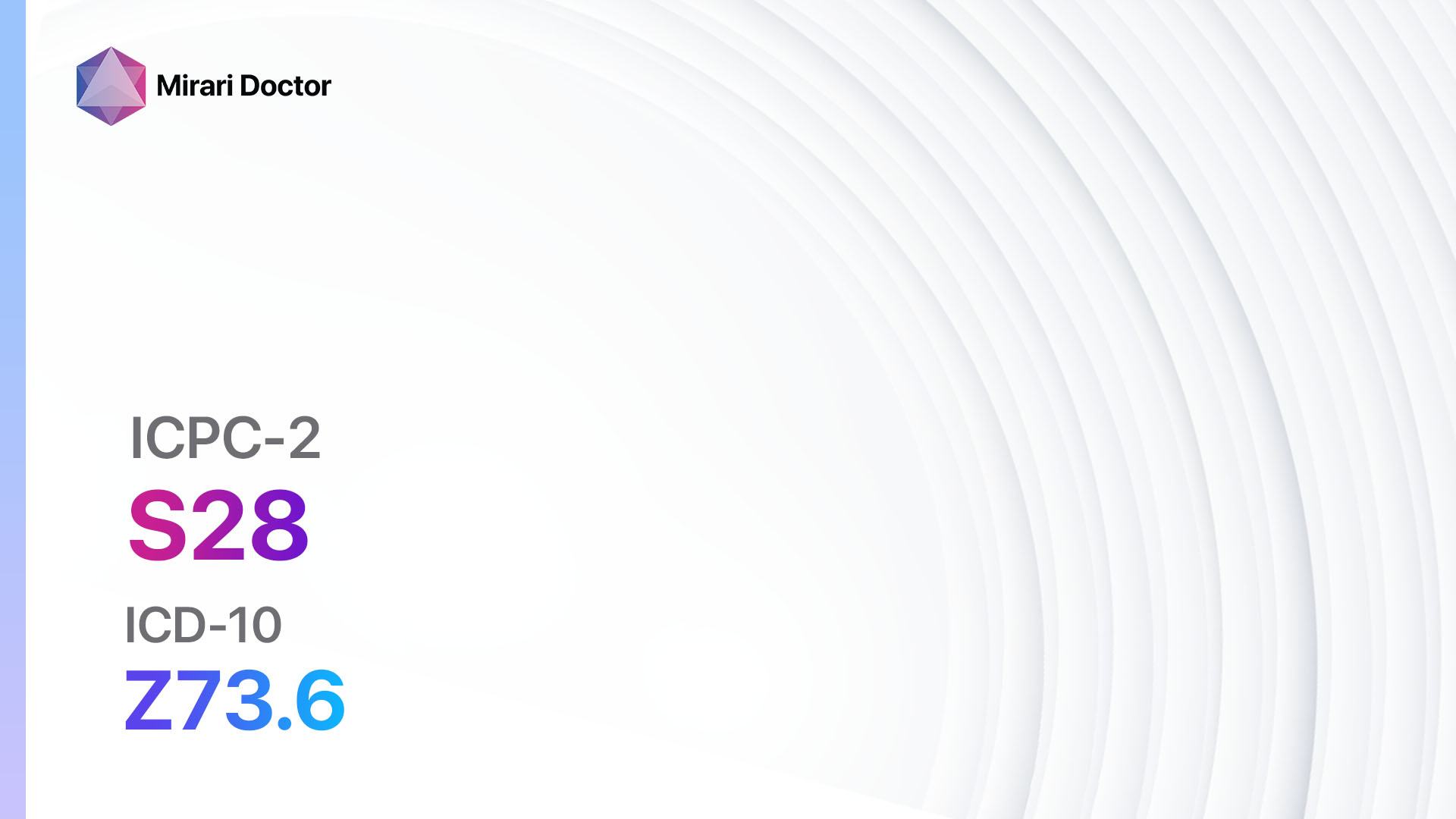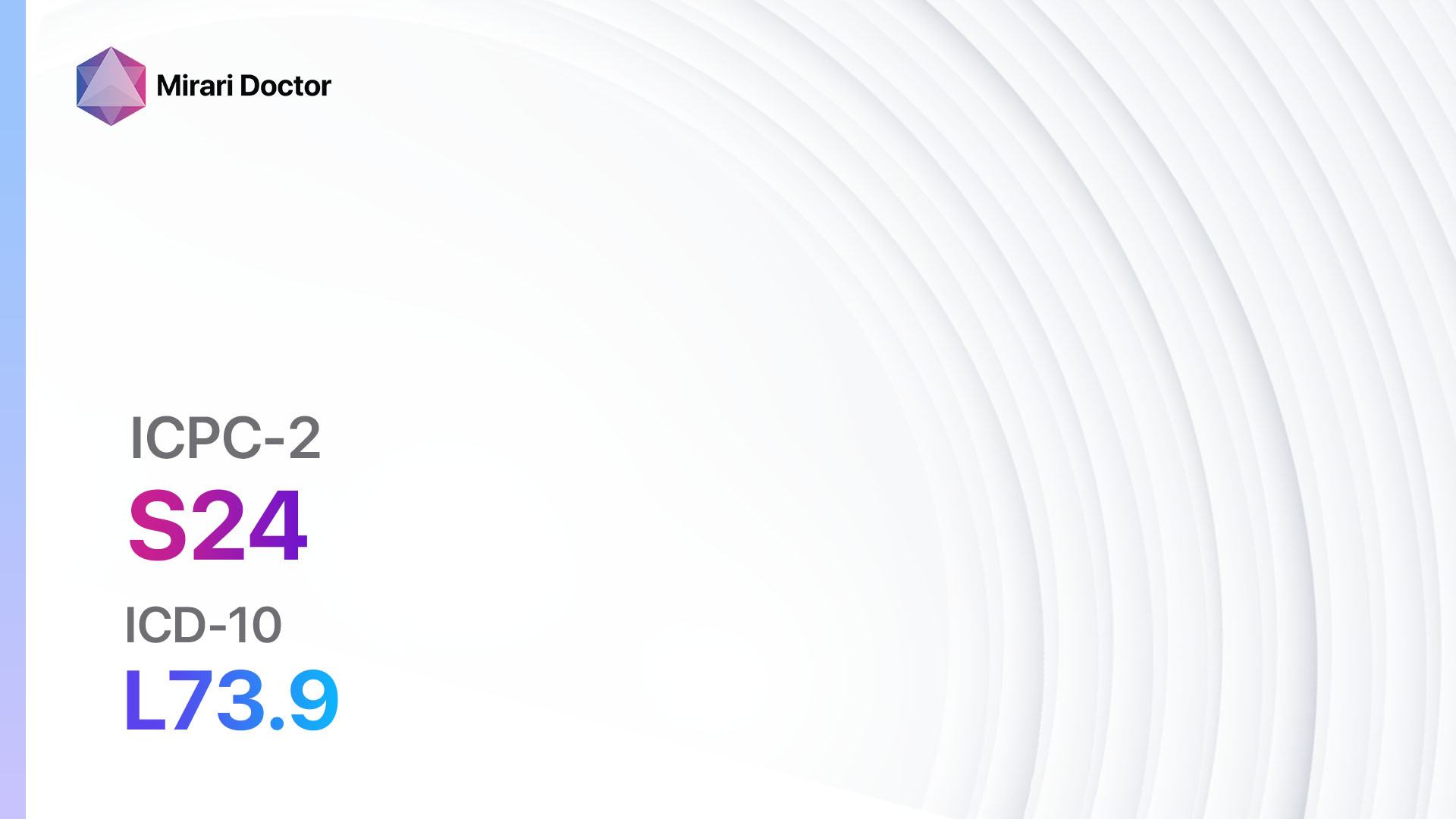
Introduction
Hair and scalp symptoms or complaints refer to any issues or abnormalities affecting the hair or scalp. These can include hair loss, dandruff, itching, scalp redness, or any other related concerns. This guide aims to provide a comprehensive approach to diagnosing and managing hair and scalp symptoms.
Codes
Symptoms
- Hair loss: Thinning or loss of hair from the scalp[1]
- Dandruff: Flaky, itchy scalp with white or yellowish scales[2]
- Scalp redness: Redness or inflammation of the scalp
- Itching: Persistent itching of the scalp
- Scalp tenderness: Sensitivity or pain in the scalp
Causes
- Genetic factors: Family history of hair loss or scalp conditions[3]
- Hormonal changes: Imbalances in hormones, such as during pregnancy or menopause[4]
- Scalp infections: Fungal or bacterial infections of the scalp
- Skin conditions: Conditions like psoriasis or eczema affecting the scalp[5]
- Hair care practices: Excessive use of hair products, heat styling, or tight hairstyles
- Nutritional deficiencies: Lack of essential nutrients like vitamins and minerals[6]
- Medical conditions: Underlying medical conditions like thyroid disorders or autoimmune diseases
Diagnostic Steps
Medical History
- Gather information about the patient’s hair and scalp symptoms, including duration, progression, and any associated factors.
- Ask about any previous diagnoses or treatments for hair or scalp conditions.
- Inquire about family history of hair loss or scalp conditions.
- Assess for any underlying medical conditions or medications that may contribute to the symptoms.
- Determine any recent changes in hair care practices or exposure to potential irritants.
Physical Examination
- Inspect the scalp for signs of redness, inflammation, scaling, or lesions.
- Assess the hair for thinning, bald patches, or breakage.
- Palpate the scalp for tenderness or any abnormal texture.
- Examine the hair shafts for signs of damage or abnormalities.
- Check for any associated skin conditions on other parts of the body.
Determine Severity
- Classify the severity of the hair or scalp symptoms based on the extent of hair loss, scalp inflammation, or other relevant factors.
- Mild: Minimal hair loss or scalp symptoms that do not significantly impact daily life.
- Moderate: Noticeable hair loss or scalp symptoms that may cause some distress.
- Severe: Extensive hair loss or scalp symptoms that significantly affect appearance and quality of life[7]
Laboratory Tests
- Complete blood count (CBC): To assess for any underlying nutritional deficiencies or systemic conditions.
- Thyroid function tests: To evaluate thyroid function, as thyroid disorders can contribute to hair and scalp symptoms.
- Fungal culture: If a fungal infection is suspected, a culture can help identify the specific organism.
- Skin biopsy: In cases of suspected skin conditions, a biopsy may be necessary to confirm the diagnosis[8]
Diagnostic Imaging
- No diagnostic imaging is typically necessary for hair or scalp symptoms.
Other Tests
- Trichoscopy: A non-invasive technique to examine the hair and scalp using a specialized device.
- Patch testing: If contact dermatitis is suspected, patch testing can identify potential allergens.
- Hair pull test: To assess for excessive hair shedding or hair loss.
- Scalp biopsy: In cases where a skin condition or underlying pathology is suspected, a scalp biopsy may be performed[9]
Follow-up and Patient Education
- Schedule follow-up appointments to monitor the progress of treatment and adjust interventions if necessary.
- Provide patient education on proper hair care practices, including gentle handling, avoiding excessive heat or chemical treatments, and using appropriate hair products.
- Discuss the importance of a balanced diet and adequate nutrition for healthy hair and scalp.
- Address any concerns or questions the patient may have regarding their hair or scalp symptoms[10].
Possible Interventions
Traditional Interventions
Medications:
Top 5 drugs for hair and scalp symptoms:
- Minoxidil (Rogaine):
- Cost: $20-$40 for a 2-month supply.
- Contraindications: Allergy to minoxidil, scalp conditions like psoriasis or eczema.
- Side effects: Scalp irritation, itching, dryness.
- Severe side effects: Rare, but can include chest pain or rapid heartbeat.
- Drug interactions: None reported.
- Warning: Results may take several months to become noticeable.
- Finasteride (Propecia):
- Cost: $50-$70 for a 1-month supply.
- Contraindications: Allergy to finasteride, pregnancy (for women).
- Side effects: Decreased libido, erectile dysfunction.
- Severe side effects: Rare, but can include allergic reactions or breast tenderness.
- Drug interactions: None reported.
- Warning: Not recommended for use in women.
- Ketoconazole (Nizoral):
- Cost: $15-$20 for a 1-month supply.
- Contraindications: Allergy to ketoconazole, liver disease.
- Side effects: Scalp irritation, dryness, hair texture changes.
- Severe side effects: Rare, but can include severe allergic reactions or liver problems.
- Drug interactions: None reported.
- Warning: Use as directed and avoid contact with eyes.
- Corticosteroids (topical or oral):
- Cost: Varies depending on the specific medication.
- Contraindications: Allergy to corticosteroids, systemic fungal infections.
- Side effects: Skin thinning, increased risk of infections.
- Severe side effects: Rare, but can include adrenal suppression or Cushing’s syndrome.
- Drug interactions: Varies depending on the specific medication.
- Warning: Long-term use should be monitored by a healthcare professional.
- Antifungal agents (e.g., Clotrimazole, Terbinafine):
- Cost: Varies depending on the specific medication.
- Contraindications: Allergy to antifungal agents, liver disease.
- Side effects: Skin irritation, burning sensation.
- Severe side effects: Rare, but can include severe allergic reactions or liver problems.
- Drug interactions: Varies depending on the specific medication.
- Warning: Use as directed and complete the full course of treatment.
Alternative Drugs:
- Biotin: A vitamin supplement that may promote hair growth. Cost: $10-$20 for a 1-month supply.
- Saw palmetto: An herbal supplement that may help with hair loss. Cost: $10-$20 for a 1-month supply.
- Iron supplements: If iron deficiency is a contributing factor. Cost: $5-$15 for a 1-month supply.
- Topical corticosteroids: For localized scalp inflammation. Cost: Varies depending on the specific medication.
- Topical antifungal creams: For fungal scalp infections. Cost: Varies depending on the specific medication.
Surgical Procedures:
- Hair transplant: Surgical procedure to transplant hair follicles from one part of the body to the scalp. Cost: $4,000-$15,000.
- Scalp reduction: Surgical procedure to remove bald areas of the scalp and tighten the surrounding skin. Cost: $2,000-$10,000.
- Scalp micropigmentation: Non-surgical procedure to tattoo the scalp to create the appearance of hair. Cost: $1,000-$4,000.
Alternative Interventions
- Acupuncture: May help improve blood flow and reduce scalp inflammation. Cost: $60-$120 per session.
- Herbal supplements: Some herbs like rosemary or saw palmetto may have potential benefits for hair and scalp health. Cost: Varies depending on the specific supplement.
- Scalp massage: Stimulates blood circulation and promotes relaxation. Cost: Free or minimal cost if self-performed.
- Aromatherapy: Using essential oils like lavender or rosemary for scalp massage or hair care. Cost: Varies depending on the specific oils.
- Stress management techniques: Stress reduction may help improve hair and scalp health. Cost: Free or minimal cost if self-practiced.
Lifestyle Interventions
- Healthy diet: Encourage a balanced diet rich in vitamins, minerals, and protein for optimal hair and scalp health. Cost: Varies depending on food choices.
- Gentle hair care practices: Advise against excessive heat styling, tight hairstyles, or harsh hair products. Cost: Minimal cost if switching to gentler hair care products.
- Regular exercise: Promotes overall health and blood circulation, which can benefit the hair and scalp. Cost: Varies depending on the chosen exercise activities.
- Stress reduction techniques: Encourage stress management through activities like yoga, meditation, or hobbies. Cost: Free or minimal cost if self-practiced.
- Adequate sleep: Emphasize the importance of sufficient sleep for overall health and hair growth. Cost: Free.
It is important to note that the cost ranges provided are approximate and may vary depending on the location and availability of the interventions.
Mirari Cold Plasma Alternative Intervention
Understanding Mirari Cold Plasma
- Safe and Non-Invasive Treatment: Mirari Cold Plasma is a safe and non-invasive treatment option for various skin conditions. It does not require incisions, minimizing the risk of scarring, bleeding, or tissue damage.
- Efficient Extraction of Foreign Bodies: Mirari Cold Plasma facilitates the removal of foreign bodies from the skin by degrading and dissociating organic matter, allowing easier access and extraction.
- Pain Reduction and Comfort: Mirari Cold Plasma has a local analgesic effect, providing pain relief during the treatment, making it more comfortable for the patient.
- Reduced Risk of Infection: Mirari Cold Plasma has antimicrobial properties, effectively killing bacteria and reducing the risk of infection.
- Accelerated Healing and Minimal Scarring: Mirari Cold Plasma stimulates wound healing and tissue regeneration, reducing healing time and minimizing the formation of scars.
Mirari Cold Plasma Prescription
Video instructions for using Mirari Cold Plasma Device – S24 Hair/scalp symptom/complaint (ICD-10:L73.9)
| Mild | Moderate | Severe |
| Mode setting: 1 (Infection) Location: 0 (Localized) Morning: 15 minutes, Evening: 15 minutes |
Mode setting: 1 (Infection) Location: 0 (Localized) Morning: 30 minutes, Lunch: 30 minutes, Evening: 30 minutes |
Mode setting: 1 (Infection) Location: 0 (Localized) Morning: 30 minutes, Lunch: 30 minutes, Evening: 30 minutes |
| Mode setting: 2 (Wound Healing) Location: 0 (Localized) Morning: 15 minutes, Evening: 15 minutes |
Mode setting: 2 (Wound Healing) Location: 0 (Localized) Morning: 30 minutes, Lunch: 30 minutes, Evening: 30 minutes |
Mode setting: 2 (Wound Healing) Location: 0 (Localized) Morning: 30 minutes, Lunch: 30 minutes, Evening: 30 minutes |
| Total Morning: 30 minutes approx. $5 USD, Evening: 30 minutes approx. $5 USD |
Total Morning: 60 minutes approx. $10 USD, Lunch: 60 minutes approx. $10 USD, Evening: 60 minutes approx. $10 USD, |
Total Morning: 60 minutes approx. $10 USD, Lunch: 60 minutes approx. $10 USD, Evening: 60 minutes approx. $10 USD, |
| Usual treatment for 7-60 days approx. $70 USD – $600 USD | Usual treatment for 6-8 weeks approx. $1,260 USD – $1,680 USD |
Usual treatment for 3-6 months approx. $2,700 USD – $5,400 USD
|
 |
|
Use the Mirari Cold Plasma device to treat Hair/scalp symptom/complaint effectively.
WARNING: MIRARI COLD PLASMA IS DESIGNED FOR THE HUMAN BODY WITHOUT ANY ARTIFICIAL OR THIRD PARTY PRODUCTS. USE OF OTHER PRODUCTS IN COMBINATION WITH MIRARI COLD PLASMA MAY CAUSE UNPREDICTABLE EFFECTS, HARM OR INJURY. PLEASE CONSULT A MEDICAL PROFESSIONAL BEFORE COMBINING ANY OTHER PRODUCTS WITH USE OF MIRARI.
Step 1: Cleanse the Skin
- Start by cleaning the affected area of the skin with a gentle cleanser or mild soap and water. Gently pat the area dry with a clean towel.
Step 2: Prepare the Mirari Cold Plasma device
- Ensure that the Mirari Cold Plasma device is fully charged or has fresh batteries as per the manufacturer’s instructions. Make sure the device is clean and in good working condition.
- Switch on the Mirari device using the power button or by following the specific instructions provided with the device.
- Some Mirari devices may have adjustable settings for intensity or treatment duration. Follow the manufacturer’s instructions to select the appropriate settings based on your needs and the recommended guidelines.
Step 3: Apply the Device
- Place the Mirari device in direct contact with the affected area of the skin. Gently glide or hold the device over the skin surface, ensuring even coverage of the area experiencing.
- Slowly move the Mirari device in a circular motion or follow a specific pattern as indicated in the user manual. This helps ensure thorough treatment coverage.
Step 4: Monitor and Assess:
- Keep track of your progress and evaluate the effectiveness of the Mirari device in managing your Hair/scalp symptom/complaint. If you have any concerns or notice any adverse reactions, consult with your health care professional.
Note
This guide is for informational purposes only and should not replace the advice of a medical professional. Always consult with your healthcare provider or a qualified medical professional for personal advice, diagnosis, or treatment. Do not solely rely on the information presented here for decisions about your health. Use of this information is at your own risk. The authors of this guide, nor any associated entities or platforms, are not responsible for any potential adverse effects or outcomes based on the content.
Mirari Cold Plasma System Disclaimer
- Purpose: The Mirari Cold Plasma System is a Class 2 medical device designed for use by trained healthcare professionals. It is registered for use in Thailand and Vietnam. It is not intended for use outside of these locations.
- Informational Use: The content and information provided with the device are for educational and informational purposes only. They are not a substitute for professional medical advice or care.
- Variable Outcomes: While the device is approved for specific uses, individual outcomes can differ. We do not assert or guarantee specific medical outcomes.
- Consultation: Prior to utilizing the device or making decisions based on its content, it is essential to consult with a Certified Mirari Tele-Therapist and your medical healthcare provider regarding specific protocols.
- Liability: By using this device, users are acknowledging and accepting all potential risks. Neither the manufacturer nor the distributor will be held accountable for any adverse reactions, injuries, or damages stemming from its use.
- Geographical Availability: This device has received approval for designated purposes by the Thai and Vietnam FDA. As of now, outside of Thailand and Vietnam, the Mirari Cold Plasma System is not available for purchase or use.
References
- American Academy of Dermatology Association. (2022). Hair loss: Overview. Retrieved from https://www.aad.org/public/diseases/hair-loss/overview
- Mayo Clinic. (2022). Dandruff. Retrieved from https://www.mayoclinic.org/diseases-conditions/dandruff/symptoms-causes/syc-20353850
- Hagenaars, S. P., Hill, W. D., Harris, S. E., et al. (2017). Genetic prediction of male pattern baldness. PLOS Genetics, 13(2), e1006594.
- Mirmirani, P. (2013). Managing hair loss in midlife women. Maturitas, 74(2), 119-122.
- Rudnicka, L., Olszewska, M., Rakowska, A., et al. (2018). Trichoscopy update 2018. Journal of Dermatological Case Reports, 12(1), 1-10.
- Guo, E. L., & Katta, R. (2017). Diet and hair loss: effects of nutrient deficiency and supplement use. Dermatology Practical & Conceptual, 7(1), 1-10.
- Olsen, E. A., Callender, V., McMichael, A., et al. (2018). Central hair loss in African American women: incidence and potential risk factors. Journal of the American Academy of Dermatology, 79(2), 303-309.
- Miteva, M., & Tosti, A. (2013). Hair and scalp dermatoscopy. Journal of the American Academy of Dermatology, 68(3), 473-481.
- Mubki, T., Rudnicka, L., Olszewska, M., & Shapiro, J. (2014). Evaluation and diagnosis of the hair loss patient: part II. Trichoscopy and laboratory evaluations. Journal of the American Academy of Dermatology, 71(3), 431.e1-431.e11.
- Dolk, Edward ; van der Vaart, Marcel ; Lutje Hulsik, David ; Vriend, Gert ; de Haard, Hans ; Spinelli, Silvia ; Cambillau, Christian ; Frenken, Leon ; Verrips, Theo (2005). Isolation of Llama Antibody Fragments for Prevention of Dandruff by Phage Display in Shampoo. DOI: 10.1128/AEM.71.1.442-450.2005
Related articles
Made in USA


